Abstract
OBJECTIVE: To determine the drinking practices of a family practice population, to examine the CAGE and questions about drinking as a method of screening for hazardous alcohol use, and to examine the relationship between alcohol consumption and CAGE items, particularly in a subgroup of hazardous drinkers. DESIGN: Random survey of patients representative of a clinic population. SETTING: Family practice clinic. PATIENTS: Of 1420 patients approached while waiting to see a family physician for medical reasons, 1376 agreed to participate; 1334 turned in usable questionnaires. MAIN OUTCOME MEASURES: Drinking measures and CAGE items; CAGE questions and levels of alcohol use were used to determine current drinking practices. A subgroup of hazardous drinkers was examined in greater detail. RESULTS: Forty percent of male patients and 11% of female patients reported at least one "hazardous" drinking (four or more drinks) day in the past month. Answering yes to CAGE items was more specific to drinking for male subjects, who also reported a greater number of maximum drinks with a CAGE score of 2 or more. CONCLUSIONS: This brief questionnaire was a feasible tool for identifying family practice patients who could be at risk for developing alcohol problems. All patients could be invited to complete the questionnaire while waiting for their appointments.
Full text
PDF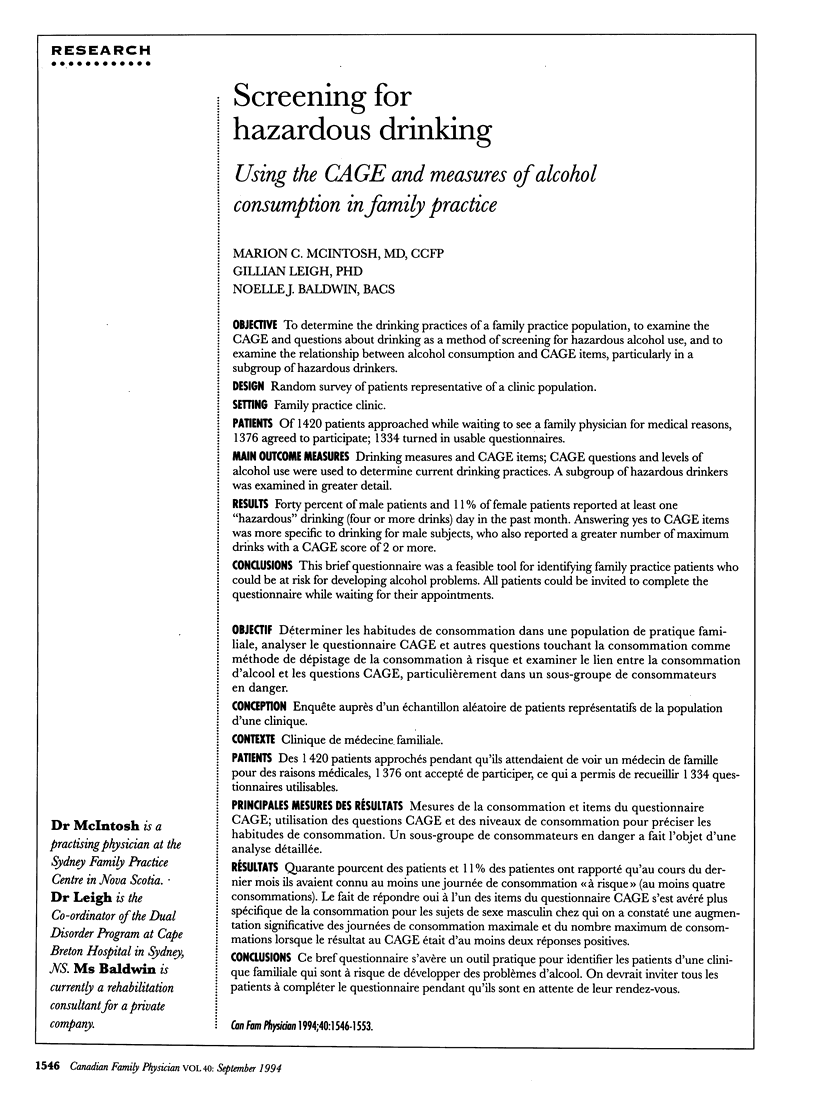
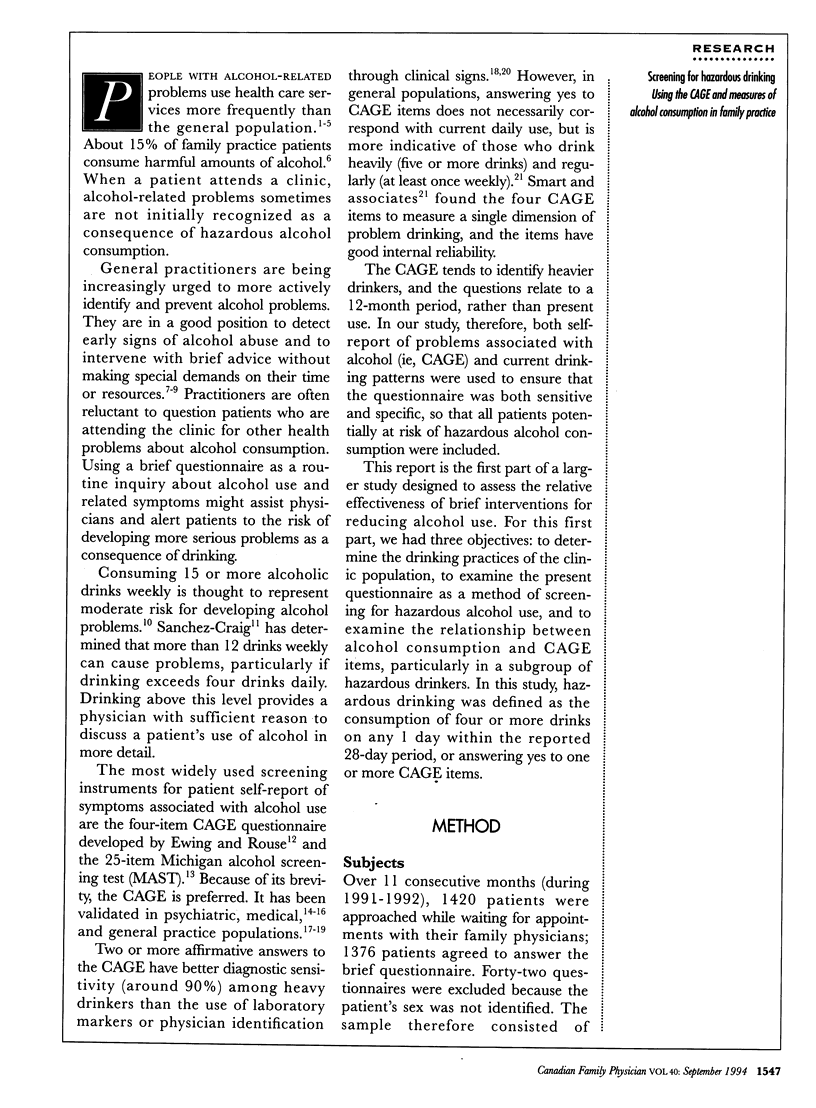
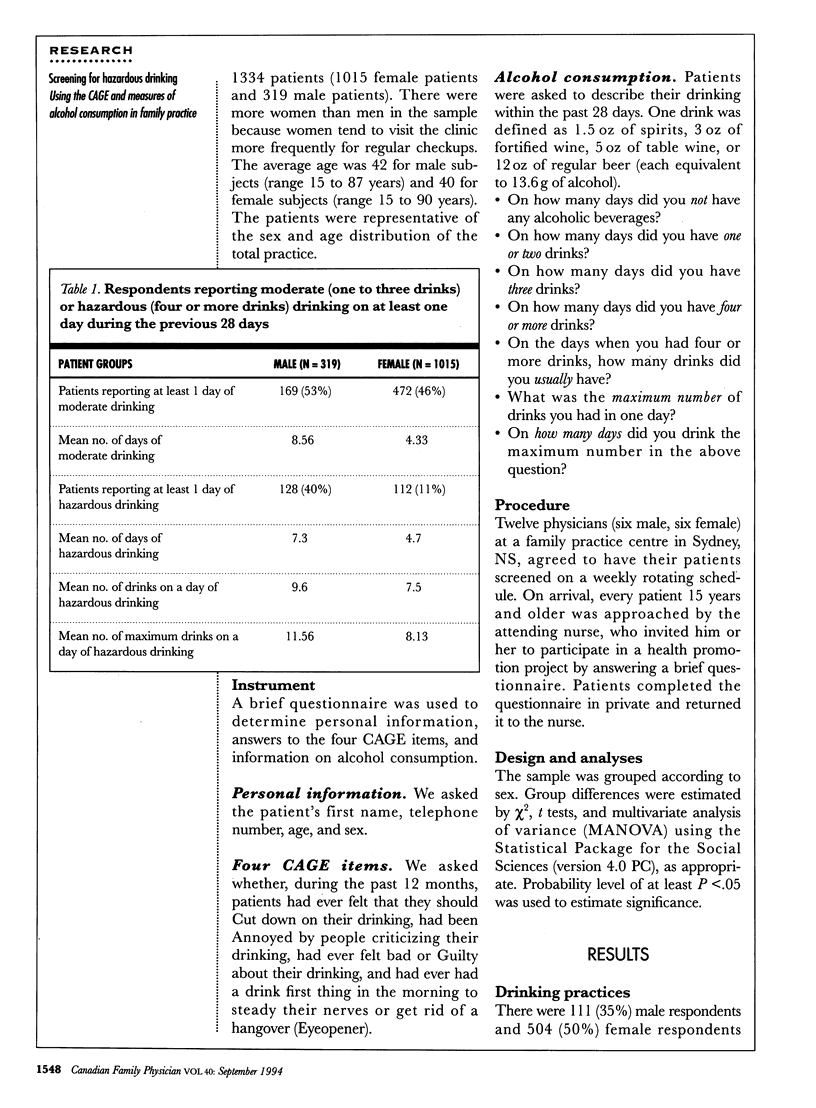
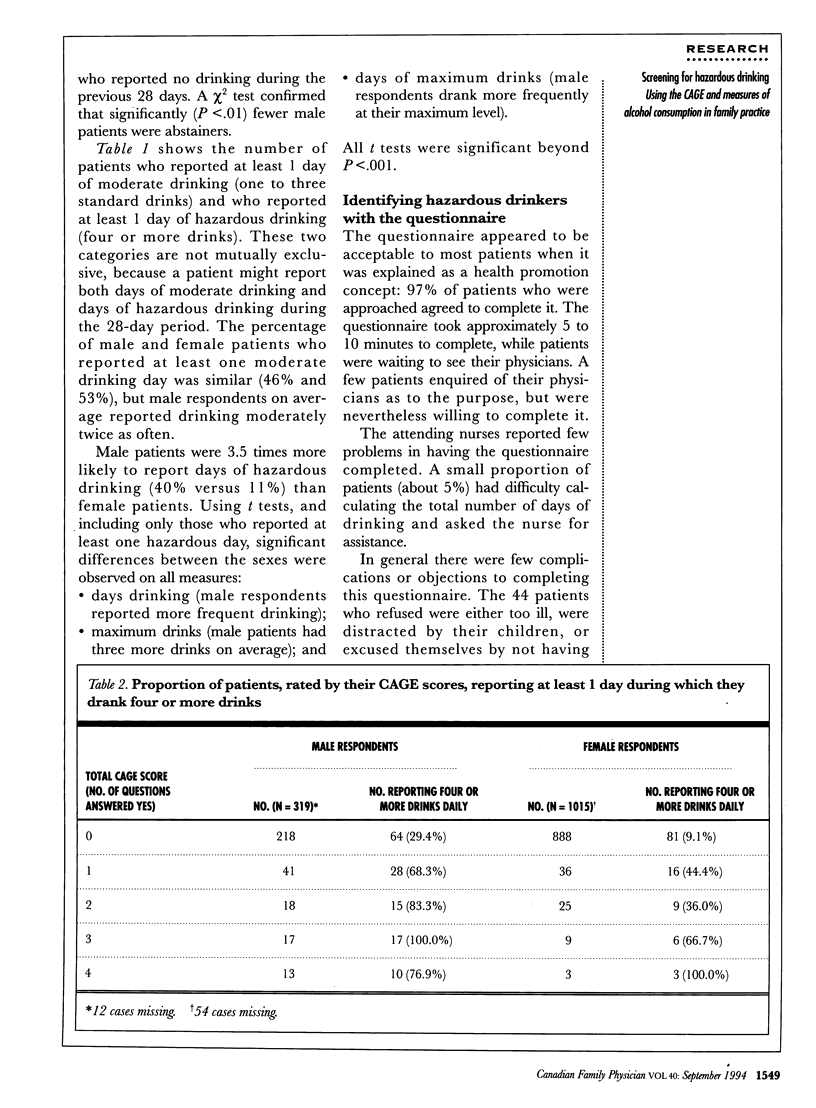
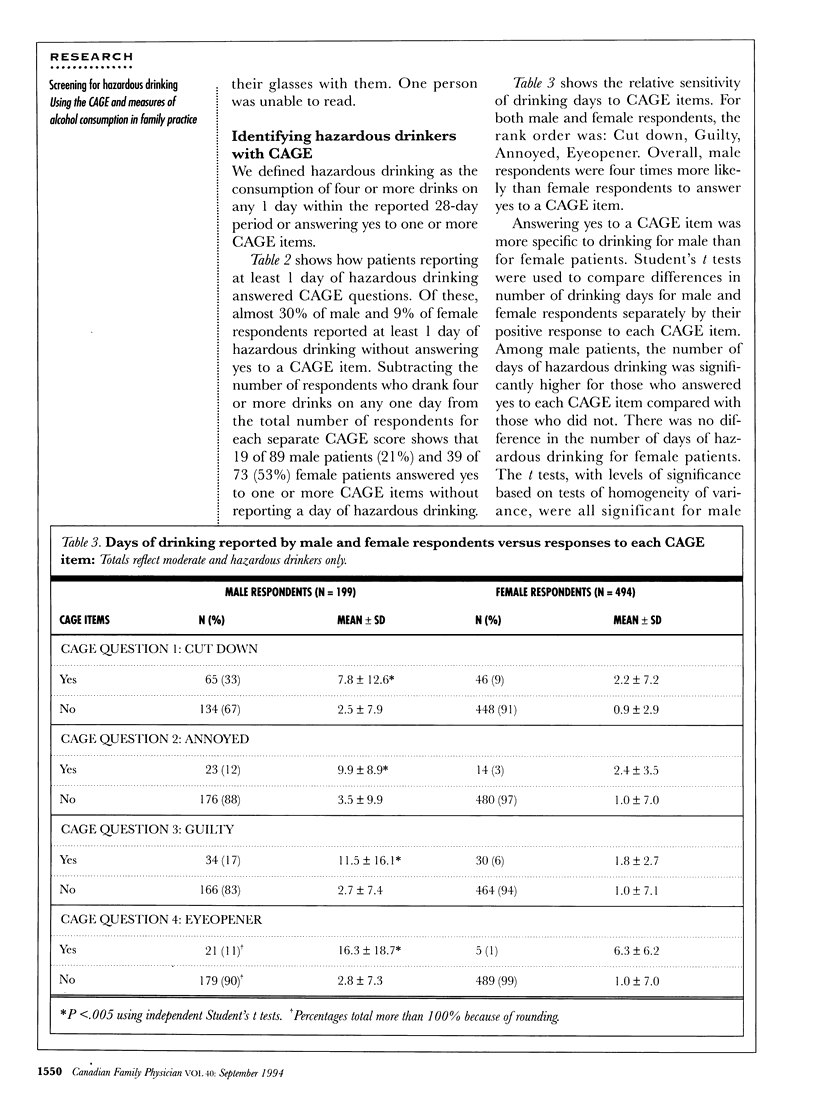
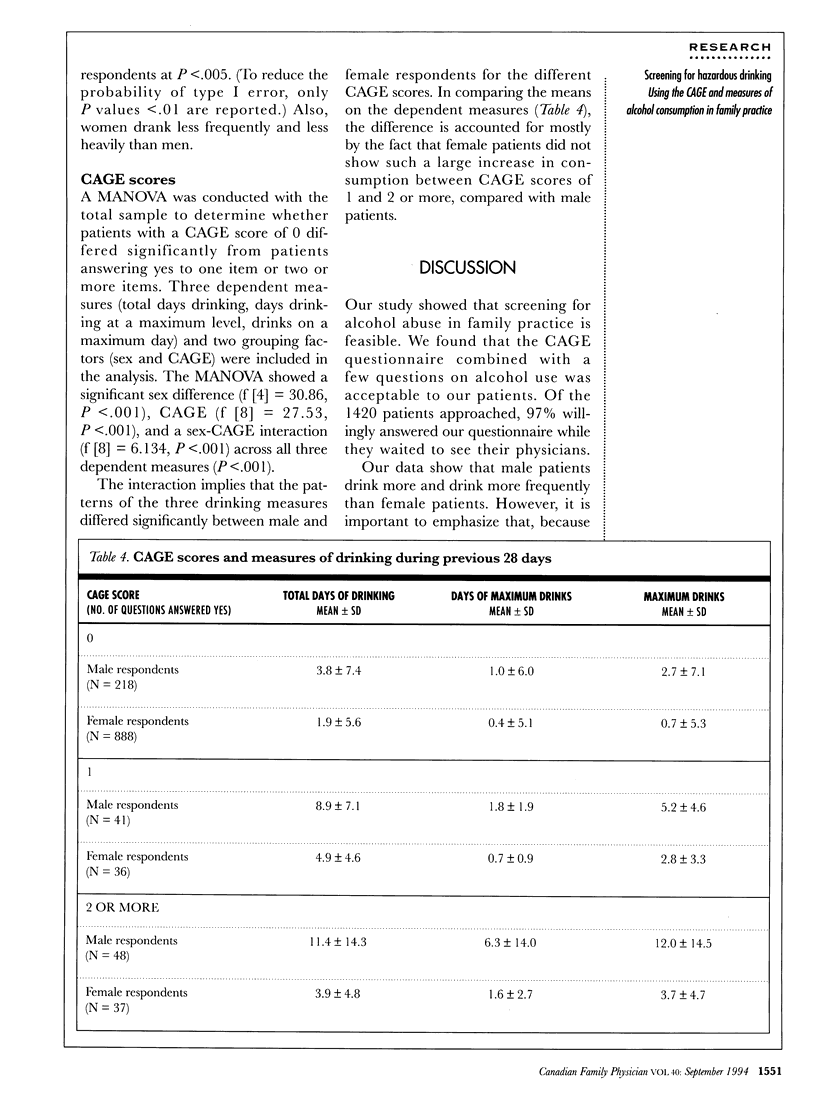
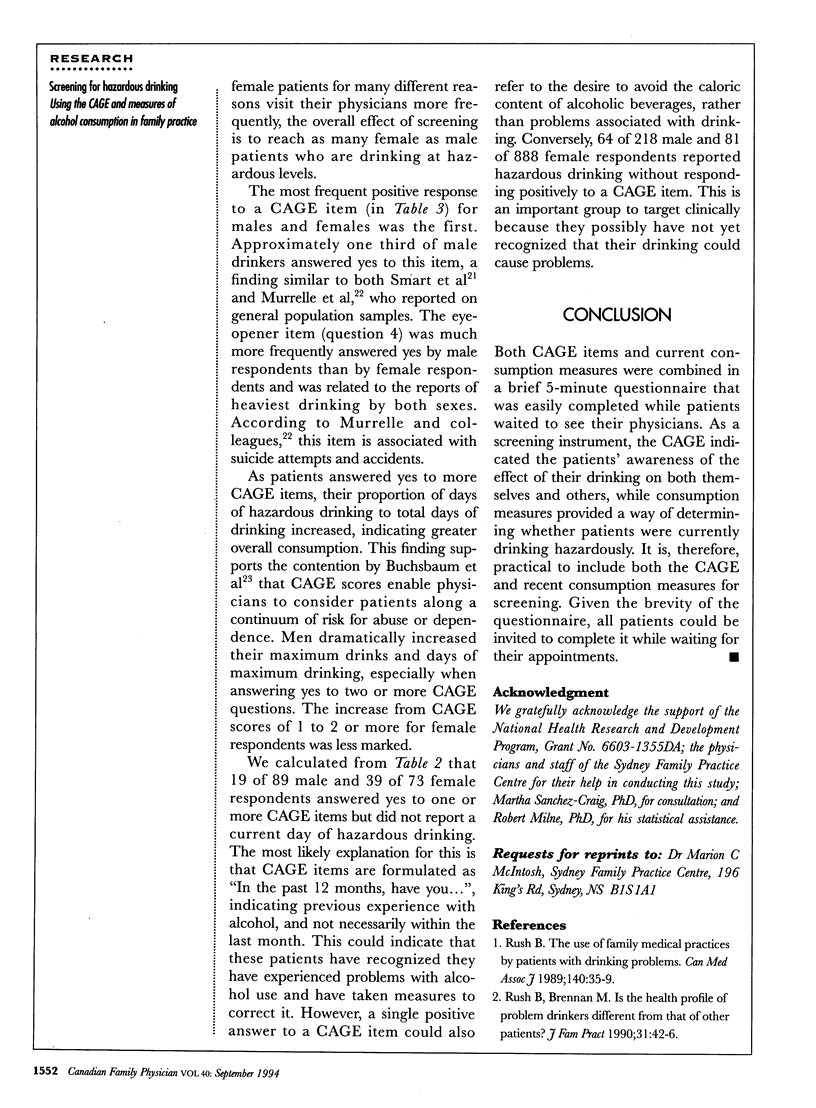
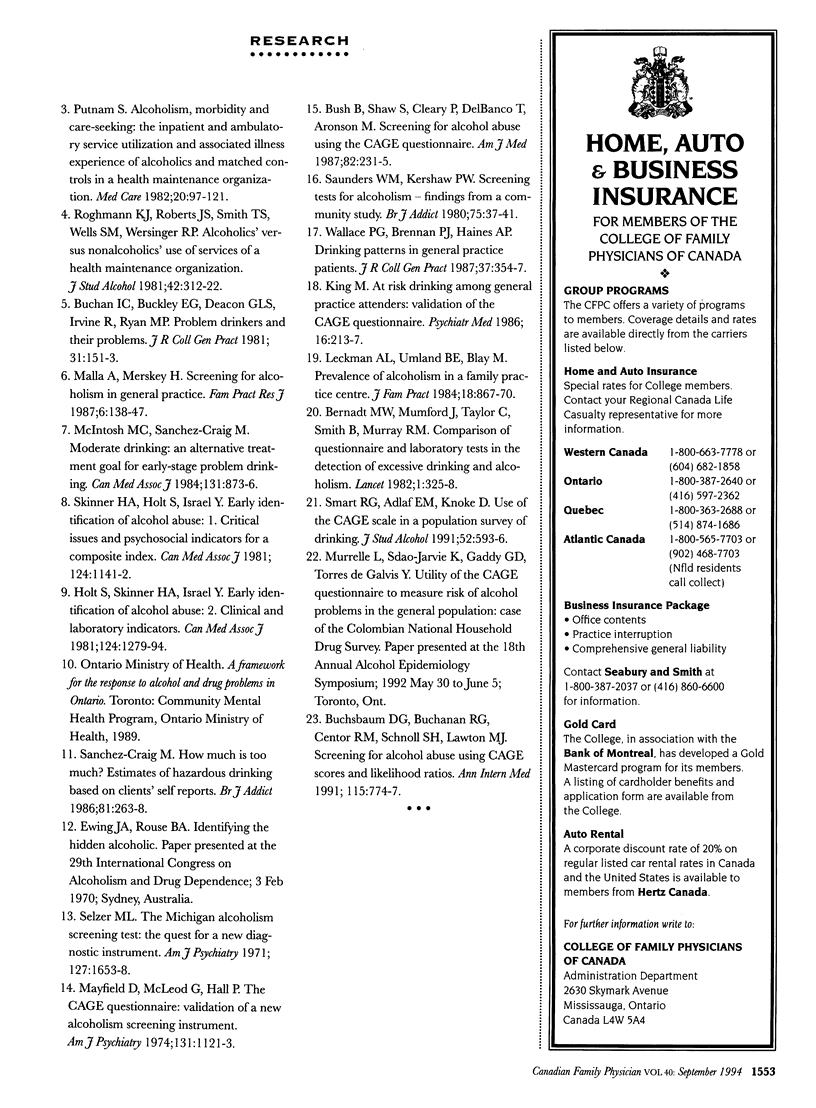
Selected References
These references are in PubMed. This may not be the complete list of references from this article.
- Bernadt M. W., Mumford J., Taylor C., Smith B., Murray R. M. Comparison of questionnaire and laboratory tests in the detection of excessive drinking and alcoholism. Lancet. 1982 Feb 6;1(8267):325–328. doi: 10.1016/s0140-6736(82)91579-3. [DOI] [PubMed] [Google Scholar]
- Buchan I. C., Buckley E. G., Deacon G. L., Irvine R., Ryan M. P. Problem drinkers and their problems. J R Coll Gen Pract. 1981 Mar;31(224):151–153. [PMC free article] [PubMed] [Google Scholar]
- Buchsbaum D. G., Buchanan R. G., Centor R. M., Schnoll S. H., Lawton M. J. Screening for alcohol abuse using CAGE scores and likelihood ratios. Ann Intern Med. 1991 Nov 15;115(10):774–777. doi: 10.7326/0003-4819-115-10-774. [DOI] [PubMed] [Google Scholar]
- Bush B., Shaw S., Cleary P., Delbanco T. L., Aronson M. D. Screening for alcohol abuse using the CAGE questionnaire. Am J Med. 1987 Feb;82(2):231–235. doi: 10.1016/0002-9343(87)90061-1. [DOI] [PubMed] [Google Scholar]
- Holt S., Skinner H. A., Israel Y. Early identification of alcohol abuse: 2: Clinical and laboratory indicators. Can Med Assoc J. 1981 May 15;124(10):1279-94, 1299. [PMC free article] [PubMed] [Google Scholar]
- King M. At risk drinking among general practice attenders: validation of the CAGE questionnaire. Psychol Med. 1986 Feb;16(1):213–217. doi: 10.1017/s0033291700002658. [DOI] [PubMed] [Google Scholar]
- Leckman A. L., Umland B. E., Blay M. Prevalence of alcoholism in a family practice center. J Fam Pract. 1984 Jun;18(6):867–870. [PubMed] [Google Scholar]
- Malla A., Merskey H. Screening for alcoholism in family practice. Fam Pract Res J. 1987 Spring;6(3):138–147. [PubMed] [Google Scholar]
- McIntosh M. C., Sanchez-Craig M. Moderate drinking: an alternative treatment goal for early-stage problem drinking. Can Med Assoc J. 1984 Oct 15;131(8):873–876. [PMC free article] [PubMed] [Google Scholar]
- Putnam S. L. Alcoholism, morbidity and care-seeking. The inpatient and ambulatory service utilization and associated illness experience of alcoholics and matched controls in a health maintenance organization. Med Care. 1982 Jan;20(1):97–121. [PubMed] [Google Scholar]
- Roghmann K. J., Roberts J. S., Smith T. S., Wells S. M., Wersinger R. P. Alcoholics' versus nonalcoholics' use of services of a health maintenance organization. J Stud Alcohol. 1981 Mar;42(3):312–322. doi: 10.15288/jsa.1981.42.312. [DOI] [PubMed] [Google Scholar]
- Rush B. R. The use of family medical practices by patients with drinking problems. CMAJ. 1989 Jan 1;140(1):35–39. [PMC free article] [PubMed] [Google Scholar]
- Saunders W. M., Kershaw P. W. Screening tests for alcoholism--findings from a community study. Br J Addict. 1980 Mar;75(1):37–41. doi: 10.1111/j.1360-0443.1980.tb00192.x. [DOI] [PubMed] [Google Scholar]
- Skinner H. A., Holt S., Israel Y. Early identification of alcohol abuse: 1. Critical issues and psychosocial indicators for a composite index. Can Med Assoc J. 1981 May 1;124(9):1141–1152. [PMC free article] [PubMed] [Google Scholar]
- Smart R. G., Adlaf E. M., Knoke D. Use of the CAGE scale in a population survey of drinking. J Stud Alcohol. 1991 Nov;52(6):593–596. doi: 10.15288/jsa.1991.52.593. [DOI] [PubMed] [Google Scholar]
- Wallace P. G., Brennan P. J., Haines A. P. Drinking patterns in general practice patients. J R Coll Gen Pract. 1987 Aug;37(301):354–357. [PMC free article] [PubMed] [Google Scholar]


